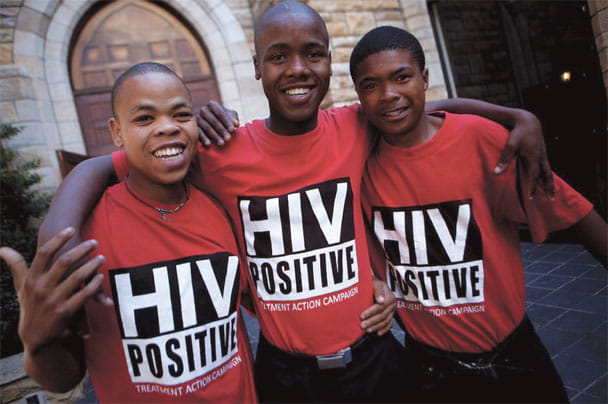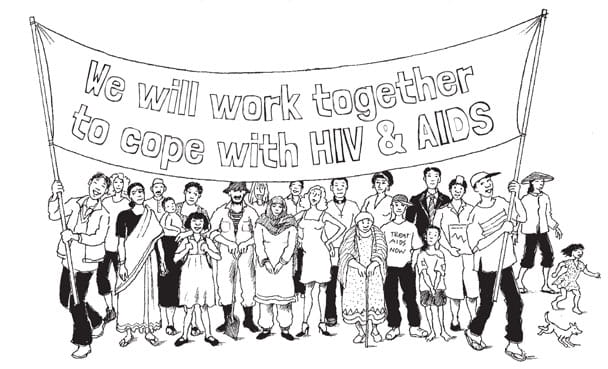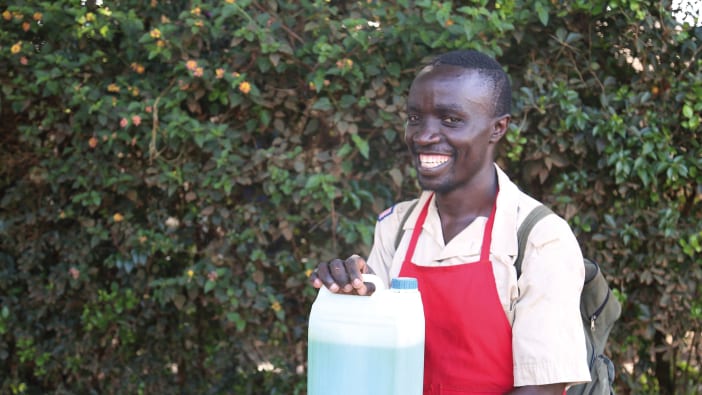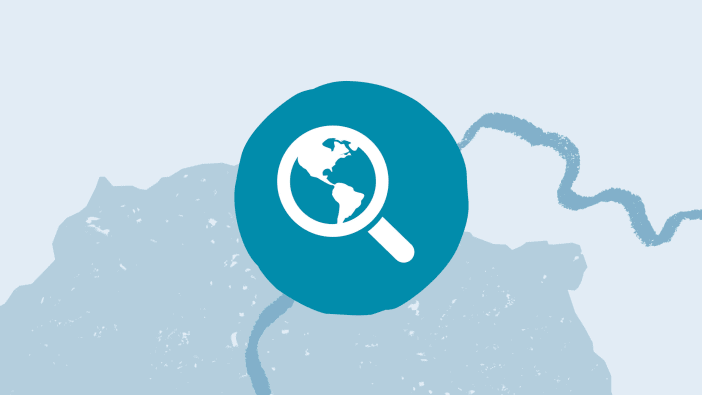We have come a long way in HIV advocacy since the very first cases of AIDS in the early 1980s. Campaigning at community, national and international level has transformed HIV treatment, prevention, care and support.

Articles
Speaking out about HIV
We have come a long way in HIV advocacy since the very first cases of AIDS. Campaigning at community, national and international level has transformed HIV treatment, prevention, care and support.
2015 Available in English, French, Portuguese and Spanish

From: HIV – Footsteps 98
How to break down stigma, prevent mother-to-child transmission and support people living with HIV

South Africa’s Treatment Action Campaign has made HIV treatment much more affordable. Photo: Courtesy of the Treatment Action Campaign
We have had a number of big wins (such as those in South Africa – see below), but the fight is not yet over. The agreements at the international and national levels do not always result in real changes at the community level, particularly in rural and hard-to-reach areas. People living with HIV still face huge challenges in accessing the services and treatment they need to live healthy lives.
Many people living with HIV still face:
- Lack of other medicines that they may require in addition to ART (such as antibiotics to combat infections)
- Stigma and discrimination from health workers
- Lack of HIV test kits in their communities.
So what can be done?
Local-level advocacy is vital for influencing government decisions about HIV response and for ensuring that communities can access the services they need. This advocacy can be done at the community, district, provincial or national level. Here are a few tips to begin advocating for improved HIV services in your community:
1. Find out what your community is entitled to
The first step is to understand what HIV services you are entitled to within your country. Most countries affected by HIV have a national AIDS authority, which produces plans for their HIV response and policies on how to handle issues related to HIV. These documents can be accessed through your national AIDS authority’s website, or through representatives of your district, province or state. If the information is hard to understand, seek advice from churches, non-governmental organisations (NGOs) or officials for your district or province.
2. Check whether your community is receiving the services you have been promised
Once you know what you are entitled to, you can check whether your community is receiving all the services that should be in place. By talking to people living with HIV in the community, you can understand what is happening at your local health centres. Are people being discriminated against because of their HIV status? Are the drugs they need available when they need them? For people who want to be tested for HIV, is there a supply of test kits at the health centre?
3. Identify what needs to change
Once you have the information on what services you are entitled to, and have assessed how this compares to the reality at the community level, you can identify what needs to change. Does a policy need to be put into practice – for example, is your local health centre failing to provide a legally required service? Or does a policy need to be changed?
4. Advocate to local officials
After you have decided what needs to change, you need to identify who has the power to bring about this change. The first person to approach at a local level would usually be a local government representative. In some places this is the Village Development Committee. In other places there might be representatives for dealing with health issues, such as a Village Health Committee. Outline your concerns to them – share what you know about the government’s commitment to HIV services and the gaps you see in your community, and propose solutions to them. Seek a way forward together.
5. Take the issue higher
If your local government does not respond, you might want to raise the issue at a higher level. You may have a District Health Management Team or a team of representatives who work on health at a higher level than the Village Development Committee. There might even be committees responsible for particular aspects of the HIV response. Find these representatives and take your concerns to them. Be clear about what you are asking for and what you want them to do.

Illustration: Petra Rohr-Rouendaal, Where there is no artist (second edition)
6. Work with others
Working together with others (such as other communities, NGOs or community groups) can help to put pressure on decision-makers to bring about the changes needed. Consider whom you can work with to advocate for change.
If you see things in your community that you think are not right, such as a lack of drugs, a shortage of test kits or people being discriminated against because of their HIV status, speak out! Together we can ensure that all people living with HIV have access to quality health care, dignity, support and the life-saving treatments they need.
Melissa Lawson is Tearfund’s Policy Officer for East and Southern Africa. Shannon Thomson is the Projects Officer for Tearfund’s HIV Unit.
For further information and ideas, visit www.tearfund.org/whyadvocate and download Tearfund’s booklet Why advocate on HIV? The booklet is available in English, French, Portuguese and Spanish.
Case study - The Treatment Action Campaign, South Africa
Back in 1998, the Treatment Action Campaign (TAC) was set up in South Africa. At that time, South African political leaders were in denial about the realities of HIV and AIDS, and gave out a number of misleading and inaccurate statements about the virus. Treatment was difficult to access and incredibly expensive, even for people living in more developed countries. TAC was set up to respond to this situation, made up of people who were living with or affected by HIV.
In 2002, TAC launched a campaign for affordable treatment, putting pressure on pharmaceutical companies to allow cheaper generic (non-branded) medicines into the market. In 2003 they won, and this success transformed the HIV response. Treatment was first made more accessible for people living on lower incomes and was later made free through government and donor partnerships. The TAC campaign not only influenced South Africa and access to treatment there, but had a global effect.
Case study - Advocating for food in Mozambique
Many people in Mozambique are living in poverty and do not have a reliable source of food. Natural disasters, such as flooding, make the problem worse. The lack of food security particularly affects people living with HIV.
This was an issue that worried Rede Cristã, a network of Christian NGOs and churches in Mozambique. Over several years, members of Rede Cristã developed relationships with officials in all the departments of the Mozambique government that were involved with HIV. Together, they helped to draft a law setting out the rights of people living with HIV to adequate food supplies and levels of nutrition. After the law was passed, Rede Cristã worked closely with their church members to make sure it was put into practice. They did this in several ways:
- They made sure that people with HIV knew about the law.
- They inspired local churches to take more responsibility in caring for people affected by HIV.
- They encouraged good relationships to be formed between local authority officials and members of churches and communities affected by HIV.
Adapted from the second edition of Tearfund’s Advocacy toolkit (ROOTS 1 and 2) by Joanna Watson.
Visit www.tearfund.org/advocacytoolkit to download the Advocacy toolkit free of charge. You can order a printed copy (costing £20) by following the instructions at the bottom of the Resources section on page 14.
View or download this resource
Get this resource
Get this resource
Similarly Tagged Content
Share this resource
If you found this resource useful, please share it with others so they can benefit too.

Subscribe to Footsteps magazine
A free digital and print magazine for community development workers. Covering a diverse range of topics, it is published three times a year.
Sign up now - Subscribe to Footsteps magazine




